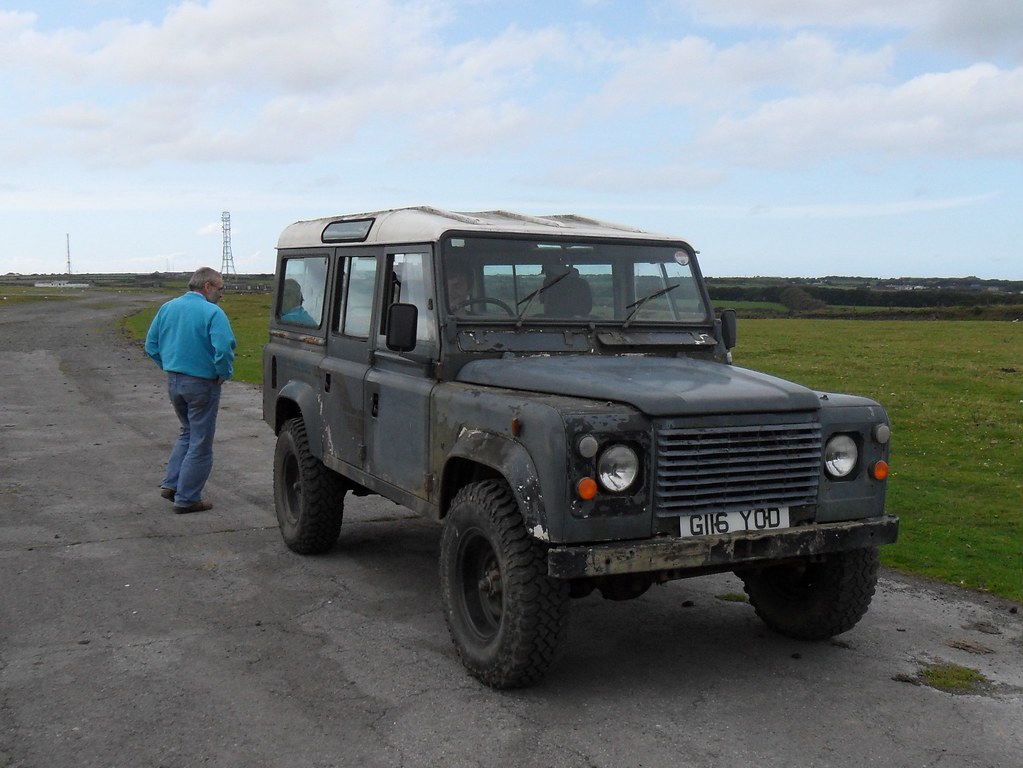
In today’s fast-moving used car market, crossovers dominate the landscape with an iron grip. They’ve become the automotive equivalent of the smartphone—versatile, reliable, and practically indispensable for the average modern household. From young professionals looking for a commuter with cargo space, to parents needing family-friendly practicality, to retirees downsizing from larger SUVs, crossovers hit the sweet spot in size, efficiency, and flexibility.
This explosive demand has created a high-stakes environment for buyers, sellers, and dealers alike. Not all crossovers, however, are created equal. Some fly off dealership lots almost as fast as they arrive, while others linger, gather dust, and eventually get wholesaled at a loss. So what makes the difference?
The used crossover market is shaped by a number of key forces: brand reputation, reliability, fuel economy, resale value, availability of parts, and long-term ownership costs. But there’s more nuance here than just numbers. Buyer perception, social proof, and personal experience weigh heavily on purchasing decisions. For used car dealers, the ability to spot a fast-seller versus a slow-mover can be the difference between profit and pain. We begin by examining the top five contenders that consistently impress both dealers and discerning buyers.
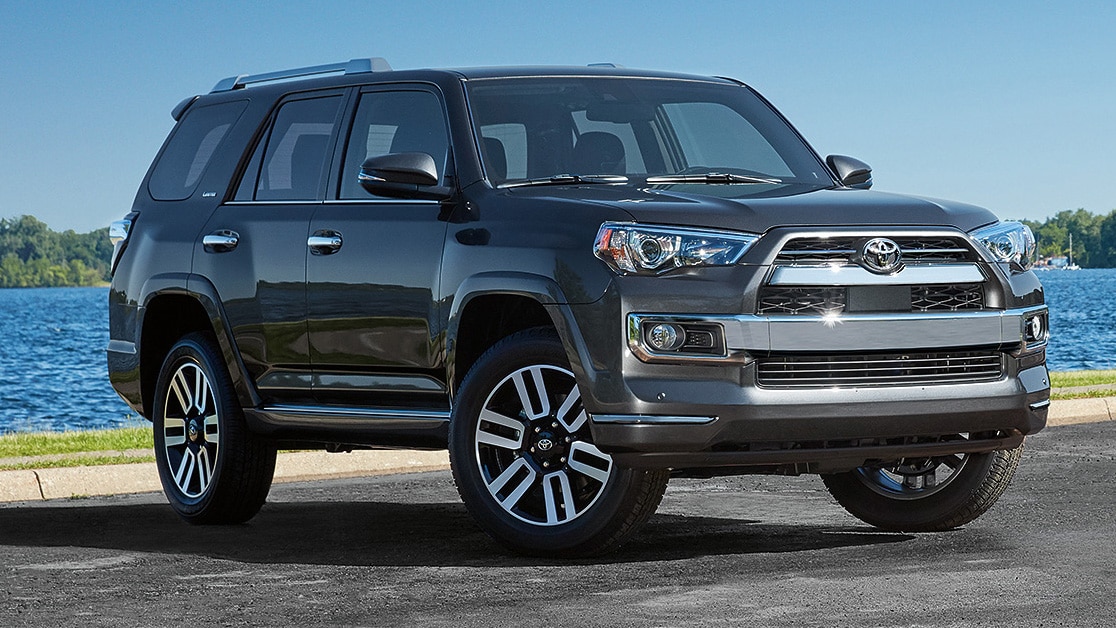
1. **Toyota RAV4 — Consistently a Hot Commodity**Few vehicles capture the essence of what the average crossover buyer wants better than the Toyota RAV4. Over the years, it has evolved into one of the most well-rounded and desirable used cars on the market. The RAV4’s continued popularity isn’t a mystery; it stems from a proven track record of reliability, practical features, and broad appeal across demographic lines.
Used RAV4s, especially those built after 2013, are known for their durability and low maintenance costs. This makes them a top pick for buyers seeking a ‘set it and forget it’ ownership experience. That peace of mind translates directly to swift sales and high resale values. It’s not unusual for a well-maintained RAV4 to log over 250,000 miles without serious issues, underscoring Toyota’s legendary dependability.
Practicality is another core driver of the RAV4’s popularity. Its interior space is generous for a compact crossover, featuring rear seats that fold flat for ample cargo room. Families appreciate the ease of loading strollers and sports gear, while pet owners benefit from the flat floor and low lift-in height. The ride is smooth, visibility is excellent, and Toyota prioritizes ease of use in its infotainment systems, making it universally accessible.
Toyota offers a wide range of trims and powertrains, including the celebrated RAV4 Hybrid. The hybrid version, with its excellent fuel economy and near-identical utility, is especially appealing as fuel prices fluctuate. Buyers seeking better mileage without the range anxiety of full EVs often choose the hybrid RAV4. Hybrid components are even covered under extended warranties in many states, offering extra protection for used buyers.
For dealers, the RAV4 is essentially gold. Inventory turnover is quick, attracting a diverse range of buyers from students to retirees. Even high-mileage examples find homes quickly due to Toyota’s trusted durability. It’s rare for a dealer to discount a RAV4; in fact, demand is so high that private sellers can command dealer-level pricing. It truly is the poster child of a used crossover that simply won’t stay on the lot.
Car Model Information: 2024 Toyota RAV4 LE
Name: Toyota RAV4
Caption: 2019 Toyota RAV4 LE AWD (AXAA54, US)
Manufacturer: Toyota
Aka: unbulleted list
Production: 1994–present
Class: Compact crossover SUV
Layout: unbulleted list
Categories: 2000s cars, 2010s cars, 2020s cars, All-wheel-drive vehicles, All Wikipedia articles written in British English
Summary: The Toyota RAV4 (Japanese: トヨタ・RAV4, Hepburn: Toyota Ravufō) is a compact crossover SUV produced by the Japanese automobile manufacturer Toyota. It is known for starting the wave of compact crossovers. The RAV4 is one of the best-selling SUVs of all time, having sold over 10 million units by February 2020. In February 2025, the RAV4 replaced the Ford F-150 as the top selling car in the United States, after nearly four decades of the F-150’s reign.
It made its debut in Japan and Europe in 1994, and in North America in 1995, being launched in January 1996. The vehicle was designed for consumers wanting a vehicle that had most of the benefits of SUVs, such as increased cargo room, higher visibility, and the option of full-time four-wheel drive, along with the maneuverability of a mid-size car. The vehicle’s name is an abbreviation of “Recreational Active Vehicle with 4-wheel drive”, or “Robust Accurate Vehicle with 4-wheel drive”, although not all models come equipped with the four-wheel drive system.
For the third-generation model, Toyota offered both short- and long-wheelbase versions of the RAV4. Short-wheelbase versions were sold in Japan and Europe; long-wheelbase versions in Australia and North America. Toyota of Japan also sold the longer-wheelbase version as the Toyota Vanguard (Japanese: トヨタ・ヴァンガード, Hepburn: Toyota Vangādo) at Toyopet Store dealership chain from 2005 through 2016. RAV4 for the Japanese market were sold at two different Toyota dealership chains, Corolla Store and Netz.
Get more information about: Toyota RAV4
Buying a high-performing used car >>>
Brand: Toyota Model: RAV4
Price: $24,982 Mileage: 33,399 mi.
Read more about: Driving Value: Consumer Reports’ Top SUVs Under $40,000 for Savvy Buyers
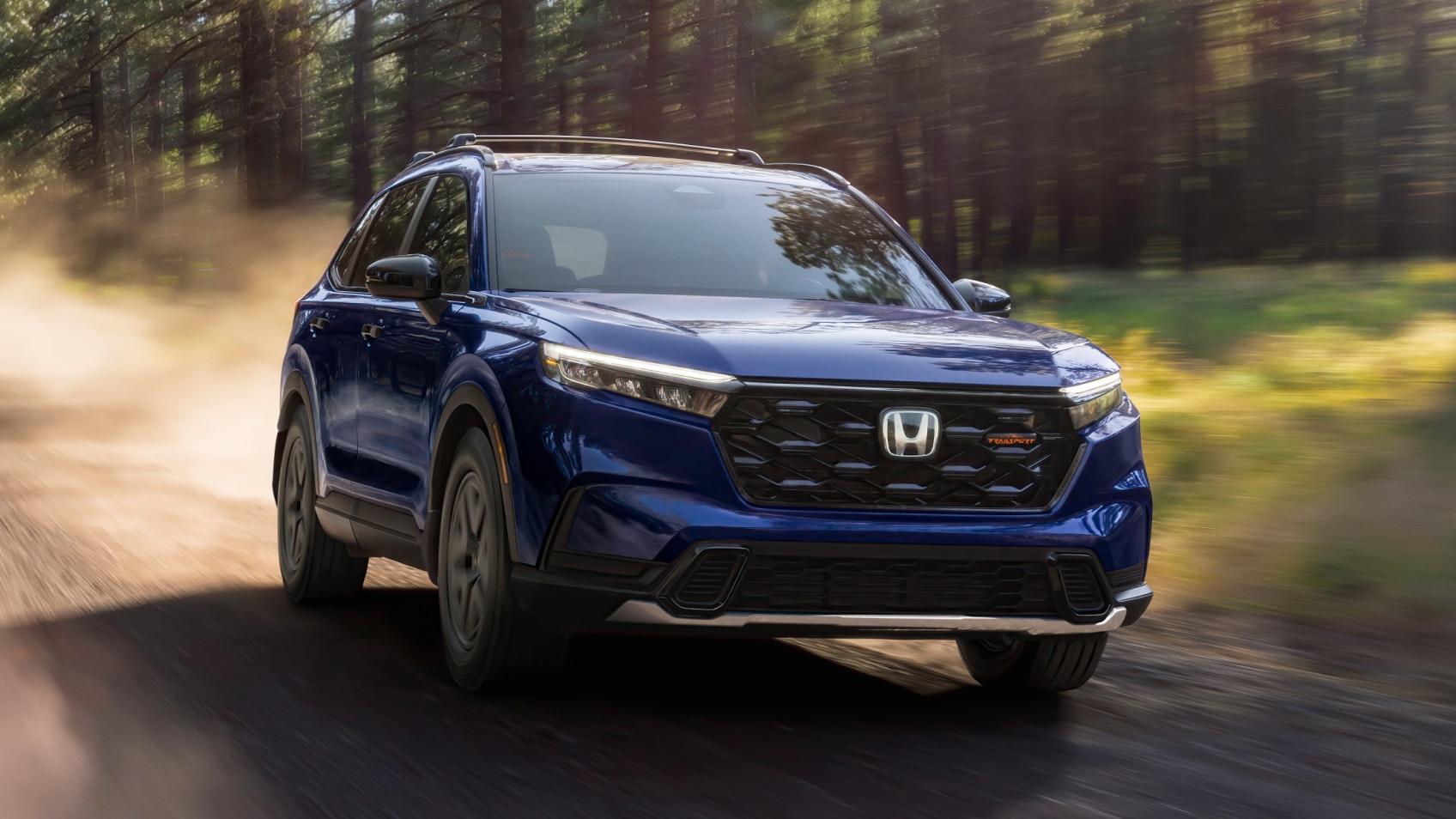
2. **Honda CR-V — The Dependable Darling**The Honda CR-V has long been the Toyota RAV4’s closest competitor in both new and used markets, and its appeal is clear. Honda’s reputation for smooth, long-lasting engines, combined with a quiet and spacious interior, has made the CR-V a hit among families, commuters, and rideshare drivers alike. CR-Vs from the 2015 model year onward are in especially high demand, offering modern styling and upgraded safety features.
These models maintain Honda’s core values: reliability, efficiency, and comfort, consistently ranking among the quickest-selling used vehicles on dealership lots. One of the CR-V’s biggest strengths is its exceptional use of interior space. Despite its compact classification, it feels airy and open inside, boasting class-leading rear legroom and a highly usable cargo area.
Fold-flat rear seats, a low cargo floor, and an easily accessible tailgate make it ideal for versatility without needing a midsize SUV. This ‘just right’ size ensures the CR-V performs equally well in city traffic or on long road trips, attracting a wide range of buyers. Its practicality is a cornerstone of its enduring appeal.
Another major selling point is the CR-V’s impressive fuel economy. Non-hybrid variants have historically delivered strong MPG figures. The introduction of the 1.5-liter turbocharged engine in more recent models boosted both performance and efficiency, offering an engaging yet fuel-conscious drive. Paired with Honda’s smooth CVT transmission, the CR-V feels like a well-engineered solution, satisfying used buyers seeking savings at the pump without sacrificing driving quality.
In terms of tech and safety, the CR-V has kept pace with industry trends. Honda’s ‘Sensing’ suite of advanced safety features became standard or widely available from 2017 onward, including adaptive cruise control and lane departure warning. This safety credibility makes it a go-to vehicle for parents or grandparents seeking peace of mind. Dealers adore the CR-V for its rapid turnover and minimal hassle, as its reputation effectively sells itself.
Car Model Information: 2016 Honda CR-V LX
Name: Honda CR-V
Caption: 2023 Honda CR-V e:HEV
Manufacturer: Honda
Aka: Honda Breeze (China, 2019–present)
Production: 1995–present
Class: Compact crossover SUV
BodyStyle: Sport utility vehicle
Layout: Front-engine, front-wheel-drive layout,Front-engine, four-wheel-drive layout
Chassis: Unibody
Predecessor: Honda Crossroad
Successor: Honda ZR-V
Categories: 2000s cars, 2010s cars, 2020s cars, All-wheel-drive vehicles, All Wikipedia articles written in British English
Summary: The Honda CR-V (also sold as the Honda Breeze in China since 2019) is a compact crossover SUV manufactured by Japanese automaker Honda since 1995. Initial models of the CR-V were built using the same platform as the Civic.
Honda began producing the CR-V in Japan and United Kingdom, for worldwide markets, adding North American manufacturing sites in the United States and Mexico in 2007, and Canada in 2012. The CR-V is also produced in Wuhan for the Chinese market by Dongfeng Honda, and also marketed as the Breeze in China for the version produced at Guangzhou by Guangqi Honda.
Honda states that “CR-V” stands for “Comfortable Runabout Vehicle,” while the term “Compact Recreational Vehicle” was used in a British car review article that was republished by Honda, associating the model name with the Sports Utility Vehicle abbreviation of SU-V.
As of 2022, the CR-V is positioned between the smaller ZR-V (marketed as HR-V in North America) — with which the CR-V shares a platform — and the larger North American market Passport/Pilot or the Chinese market Avancier/UR-V. It is currently Honda’s best-selling vehicle in the world, and the second best-selling SUV globally in 2020.
Get more information about: Honda CR-V
Buying a high-performing used car >>>
Brand: Honda Model: CR-V
Price: $15,345 Mileage: 102,036 mi.
Read more about: Behind the Grease and Grime: 12 Cars That Make Mechanics Secretly Cheer (Or Curse) When You Roll In

3. **Subaru Outback — The Adventurer’s Favorite**The Subaru Outback, with its station wagon roots and rugged character, occupies a unique niche among crossovers. This distinctiveness makes it exceptionally attractive on the used market. Buyers prioritizing utility, all-weather capability, and longevity frequently place the Outback at the top of their list. It stands apart from more city-focused crossovers.
The Outback is often favored by outdoor enthusiasts, families in snowy climates, and those who value Subaru’s strong resale value. It’s one of the rare vehicles that truly feels at home on both paved highways and challenging dirt trails, making it a favorite for drivers with active lifestyles. This versatility is a key component of its appeal.
A major draw of the Outback is its symmetrical all-wheel drive system, standard on every model. Unlike competitors who charge a premium for AWD, Subaru integrates it into the vehicle’s very DNA. This makes it particularly appealing for buyers in northern states or mountainous regions. In winter, the Outback’s resale value even tends to increase as demand for snow-worthy vehicles rises.
Combined with 8.7 inches of ground clearance, the Outback demonstrates surefooted confidence where most competitors hesitate. This inherent capability speaks volumes about its design philosophy. Inside, the Outback surprises with its spaciousness and comfort. The seating is plush, the cabin well-laid out, and even older models offer a sense of premium utility, focusing on function over flash.
Subaru’s interiors are known for being straightforward and honest. Features like heated seats, large cargo volumes, and pet-friendly surfaces make it a lifestyle vehicle that adapts to owner needs. Subaru owners tend to be loyal, contributing to strong demand. For dealers, the Outback checks every box: it’s fast-moving, appeals to a devoted audience, and retains value well, making it a smart pick for any lot.
Car Model Information: 2013 Subaru Outback 2.5i Limited
Name: Subaru Outback
Caption: 2023 Subaru Outback Premium
Manufacturer: Subaru
Production: 1994–present
ModelYears: 1995–present
Assembly: Ota, Gunma
Aka: Subaru Legacy
Class: Mid-size car
BodyStyle: station wagon
Categories: All Wikipedia articles written in American English, All articles with unsourced statements, Articles containing Japanese-language text, Articles with short description, Articles with unsourced statements from April 2012
Summary: The Subaru Outback is an automotive nameplate used by the Japanese automaker Subaru for two different themed vehicles: a Legacy-derived station wagon, the Outback (1994–present, also sold as Legacy Outback (Japanese: スバル・レガシィアウトバック, Hepburn: Subaru Regashi Autobakku) in some markets), and an Impreza-derived off-road themed hatchback, the Outback Sport (1994–2011).
Most versions of the Outback wagon and Outback Sport have had all-wheel drive as standard equipment.
Get more information about: Subaru Outback
Buying a high-performing used car >>>
Brand: Subaru Model: Outback
Price: $7,795 Mileage: 175,533 mi.
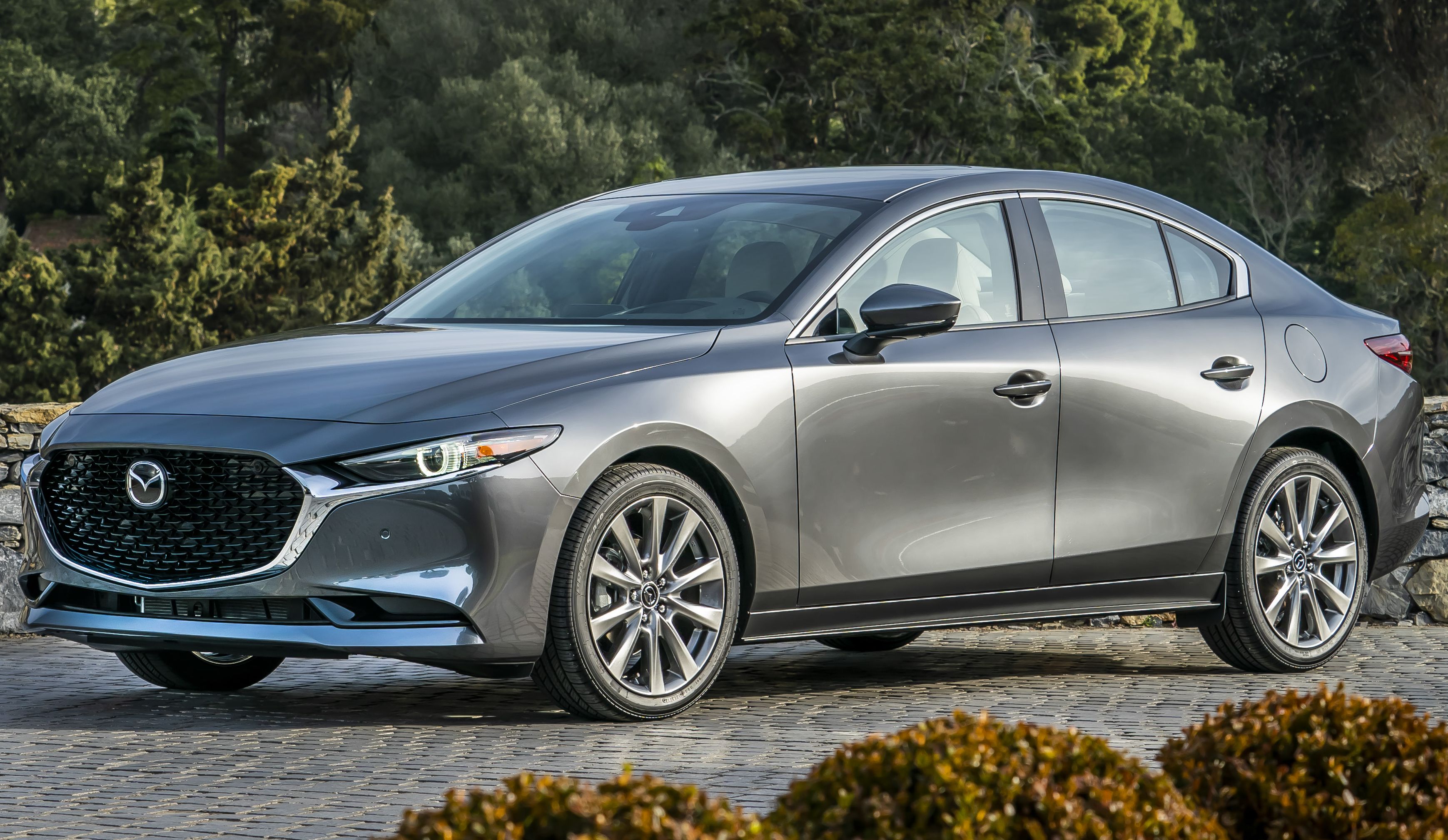
4. **Mazda CX-5 — Style Meets Substance**When evaluating used crossovers that offer both visual appeal and dynamic performance, the Mazda CX-5 consistently rises above the pack. It masterfully combines eye-catching design, upscale interior materials, and spirited driving, all within a package significantly more affordable than luxury competitors. This rare blend firmly establishes it as a sleeper hit in the used market.
While Mazda might not possess the household-name ubiquity of Toyota or Honda, the CX-5 impressively punches above its weight in quality and owner satisfaction. Its appeal stems from this unexpected premium feel. The CX-5’s design is an immediate selling point, with Mazda’s KODO design language imparting a sleek, muscular, and premium look, even years after its initial release.
Many used buyers are initially drawn to the CX-5’s appearance before discovering its tangible benefits. This crucial first impression significantly influences interest in dealership showrooms and classified listings. Simply put, a used CX-5 looks considerably more expensive than its price tag suggests, making it an attractive proposition.
Inside, the CX-5 continues to impress, with an interior that feels a class above its rivals. Stitched leather-like surfaces, intuitive controls, and excellent road noise insulation enhance the cabin experience. Buyers transitioning from sedans or less refined crossovers immediately notice the difference. For families, commuters, and older drivers, this interior quality elevates daily driving, contributing to rapid sales, especially for 2017-and-newer models that saw major improvements.
Driving dynamics represent another significant advantage for the CX-5. It handles more like a sport sedan than a typical crossover, thanks to its tight steering, responsive chassis, and well-tuned suspension. This dynamic character appeals to younger drivers and enthusiasts who find other crossovers bland. Mazda’s SkyActiv technology ensures performance doesn’t compromise fuel economy, with most CX-5s achieving over 30 mpg on the highway, even with AWD. Dealers find the CX-5 an easy sell, knowing test drives often seal the deal and its growing reliability reputation makes it a solid, profitable choice.
Car Model Information: 2016 Mazda CX-5 Grand Touring
Name: Mazda CX-5
Caption: Second generation CX-5 (KF; 2024)
Manufacturer: Mazda
Production: 2012–present
ModelYears: 2013–present
Class: Compact crossover SUV
BodyStyle: SUV
Layout: unbulleted list
Predecessor: unbulleted list
Categories: 2020s cars, All-wheel-drive vehicles, All articles containing potentially dated statements, All articles lacking reliable references, All articles with dead external links
Summary: The Mazda CX-5 is a compact crossover SUV, produced by Mazda since 2012. A successor to both the Tribute and the slightly larger CX-7, it is Mazda’s first model to feature the “Kodo” design language and the first model to be fully developed with a range of technologies branded as Skyactiv, including a rigid, lightweight platform combined with a series of engines and transmissions to reduce emissions and fuel consumption. The car was first revealed in 2011.
Since 2019, the CX-5 is positioned above the smaller CX-30. As of 2022, depending on the region, the CX-5 is positioned right below the larger CX-50, CX-60 or the CX-8 within Mazda’s crossover SUV line-up.
Since 2014, the CX-5 has consistently been Mazda’s best-selling model globally. It achieved record sales in 2019, with 444,262 units sold worldwide. As of March 2022, cumulative sales of the CX-5 reached around 3.5 million units.
Get more information about: Mazda CX-5
Buying a high-performing used car >>>
Brand: Mazda Model: CX-5
Price: $14,980 Mileage: 93,888 mi.
Read more about: Consumer Alert: Unpacking 14 SUVs That Master Transmission Reliability, Defying Post-Warranty Failure

5. **Hyundai Tucson — The Underdog That’s Gaining Serious Ground**The Hyundai Tucson, though perhaps lacking the instant brand recognition of a Toyota or Honda initially, has rapidly transformed into a serious contender in the used crossover market over the past decade. Thanks to Hyundai’s substantial investments in design, quality, and technology, the Tucson is now one of the most appealing and fast-selling used crossovers available today.
For buyers prioritizing value without sacrificing features, the Tucson frequently tops the shortlist. It represents one of the few non-Japanese compact crossovers that consistently holds its own in terms of resale speed and customer satisfaction for dealers. This swift ascent reflects a significant shift in market perception regarding Hyundai’s offerings.
One of the Tucson’s greatest strengths is its compelling value proposition. Hyundai consistently offers more features for the price than almost any competitor in the segment. Used buyers often discover they can afford higher trims—equipped with amenities like heated seats, panoramic sunroofs, premium audio, and advanced driver assistance systems—at a price point that would only secure a base model from a rival brand.
This perception of getting ‘more for less’ is a powerful psychological advantage for budget-conscious shoppers, driving quick sales, particularly in urban and suburban markets. Hyundai’s design evolution has also played a pivotal role in the Tucson’s increasing appeal. Starting with the 2016 model year and especially with bold redesigns post-2020, the Tucson shed its generic image, becoming one of the most stylish options on the road.
Sharp lines, LED lighting, and an assertive stance give it a modern look that resonates with younger buyers and style-conscious families. This curb appeal generates significant interest, with many used buyers falling for the Tucson at first sight. Furthermore, the Tucson benefits from Hyundai’s extensive warranty coverage, often transferring to used owners, providing crucial peace of mind and making it a less risky purchase for both dealer and consumer.
In the cutthroat world of used car sales, while some crossovers practically sell themselves, others are the bane of a dealer’s existence. These are the models that sit idle, gather dust, and ultimately represent a significant financial headache. For buyers, they’re often a trap, promising affordability but delivering a cocktail of mechanical woes, dated design, and a struggle to hold onto any semblance of value. Now, let’s peel back the curtain on the five used crossovers that dealers actively avoid, shining a light on their problematic mechanics, outdated interiors, poor reliability track records, and why they struggle to retain value.
Car Model Information: 2024 Hyundai TUCSON SEL
Name: Hyundai Tucson
Caption: Hyundai Tucson (NX4, SWB)
Manufacturer: Hyundai Motor Company
Aka: Hyundai ix35 (2009–2015)
Production: 2004–present
ModelYears: 2005–present
Class: Compact crossover SUV
BodyStyle: sport utility vehicle
Layout: Front-engine, front-wheel-drive layout,Front-engine, four-wheel-drive layout
Sp: us
Categories: 2010s cars, All-wheel-drive vehicles, All Wikipedia articles written in British English, All articles needing additional references, All articles with dead external links
Summary: The Hyundai Tucson (; Korean: 현대 투싼) is a compact crossover SUV produced by the South Korean manufacturer Hyundai. It is named after the city of Tucson, Arizona, U.S.
The second-generation model was marketed as the Hyundai ix35 in several markets, including Europe, Australia and China, before reverting to Tucson for the third-generation. Since its first-generation, the Tucson has been developed alongside the Kia Sportage, sharing platforms and engines.
The Tucson is the best-selling Hyundai model, with more than 7 million units sold globally since it launched in 2004. Of these, 1.4 million units have been sold in Europe.
Get more information about: Hyundai Tucson
Buying a high-performing used car >>>
Brand: Hyundai Model: Tucson
Price: $22,590 Mileage: 45,411 mi.

6. **Dodge Journey — The Definition of Dated**Few crossovers have worn out their welcome in the used market quite like the Dodge Journey. When it first debuted in 2009, the Journey offered what seemed like a compelling combination of space, affordability, and available three-row seating. However, while virtually all its competitors evolved, the Journey stagnated, eventually becoming one of the most outdated vehicles on the road by the time it was mercifully discontinued in 2020. Many used car shoppers today aren’t even aware the Journey was sold that recently, simply because its design felt so aged and barebones by the end of its run. For dealers, accepting this model as a trade-in represents a major gamble with minimal upside.
One of the biggest problems with the Journey lies squarely in its outdated mechanics. Even well into the 2010s, the base model was saddled with a 2.4-liter four-cylinder engine paired to a four-speed automatic transmission—a setup behind its time. This particular powertrain combination is not just underpowered, but also inefficient, leading to frustrating real-world performance and lackluster fuel economy. While an optional V6 improved things slightly, it came with higher maintenance costs and did little to resolve the vehicle’s fundamental shortcomings. Buyers who test-drive a Journey after experiencing a modern RAV4 or CR-V are often shocked by the stark difference in refinement and capability.
Step inside, and the Journey’s interior was equally disappointing, feeling like a time capsule to the early 2000s. Early models suffered from cheap, hard plastics, outdated infotainment, and severely limited tech integration. Crucially, later models failed to modernize in any meaningful way, clinging stubbornly to button-heavy interfaces and unimpressive materials even as rivals embraced digital dashboards and touchscreen controls as standard. For today’s used car buyers, who now rightfully expect seamless smartphone connectivity, advanced safety tech, and genuinely refined interiors even in budget-friendly vehicles, the Journey feels undeniably like a relic from another era. Dealers recognize this glaring deficiency, which is why they typically avoid stocking them unless absolutely necessary.
Reliability is another significant thorn in the Journey’s side. While its issues might not have been universally catastrophic, the model has accumulated enough recurring complaints—such as faulty HVAC systems, perplexing electrical gremlins, and premature brake wear—that dealers often view them as ticking time bombs just waiting to cause customer grief. Add in the unfortunate reality that many Journeys were sold to large fleet customers or bought purely on their low price (often resulting in minimal attention to long-term maintenance), and the pool of genuinely quality used examples shrinks to an alarming degree. Dealers would overwhelmingly rather avoid the headache and potential liability than roll the dice on a vehicle with such an uncertain and often troubling track record.
Ultimately, the Journey’s nonexistent resale value makes it an exceptionally poor business move for any dealer. Even low-mileage units struggle immensely to sell without the inducement of deep, profit-eroding discounts. Furthermore, they frequently require significant and costly reconditioning just to be considered presentable and roadworthy enough for a retail lot. The modern used car buyer is far more informed than they were a decade and a half ago, with many actively avoiding the Journey based on widespread negative online reviews and disheartening ownership forums. As a direct consequence, most dealers either offer lowball prices for these vehicles during trade-ins or send them directly to wholesale auction, hoping to offload them with the minimal loss possible. It’s a clear signal of a product that has truly overstayed its welcome.
Car Model Information: 2020 Dodge Journey SE Value
Name: Dodge Journey
Caption: 2012 Dodge Journey
Manufacturer: Dodge
Aka: Fiat Freemont,Dodge JC (Japan),Dodge JCUV (China)
Production: 2008–2020
ModelYears: 2009–2020,2011–2015 (Freemont)
Assembly: Toluca, Mexico
Designer: Ryan Nagode
Class: Mid-size crossover SUV
BodyStyle: SUV
Platform: Mitsubishi GS platform
Related: Chrysler 200,Chrysler Sebring,Dodge Avenger
Layout: Front-engine, front-wheel-drive layout
Engine: ubl
Transmission: Ultradrive#40TES/41TES
Wheelbase: 2890 mm
Abbr: on
Order: flip
Length: 192.4 in
Width: 72.2 in
Height: 66.6 in
Weight: 3818 lb
Predecessor: Fiat Ulysse,Fiat Croma
Successor: Dodge Journey (2021)
Categories: 2010s cars, 2020s cars, All-wheel-drive vehicles, All articles with dead external links, All articles with unsourced statements
Summary: The Dodge Journey is a mid-size crossover SUV manufactured and marketed by Fiat Chrysler Automobiles’ Dodge brand for model years 2009 to 2020 over a single generation, with a facelift for the 2011 model year. The Journey was styled by Ryan Nagode, and was marketed globally in both left- and right-hand drive, including as the Fiat Freemont.
Internally identified as the JC49, the Journey shares FCA’s global D-segment platform with the Dodge Avenger and a nearly identical wheelbase to the outgoing short-wheelbase (SWB) Dodge Caravan.
Having debuted at the 2007 Frankfurt Motor Show, the Journey subsequently appeared at the 2009 Frankfurt Motor Show. All models were manufactured in Mexico at FCA’s Toluca Assembly facility, with just over 1.1 million manufactured before production ended in 2020.
Get more information about: Dodge Journey
Buying a high-performing used car >>>
Brand: Dodge Model: Journey
Price: Not Priced Mileage: 81,197 mi.
Read more about: 15 Iconic Nameplates: Classic Car Brands Fueling the Electric Revolution
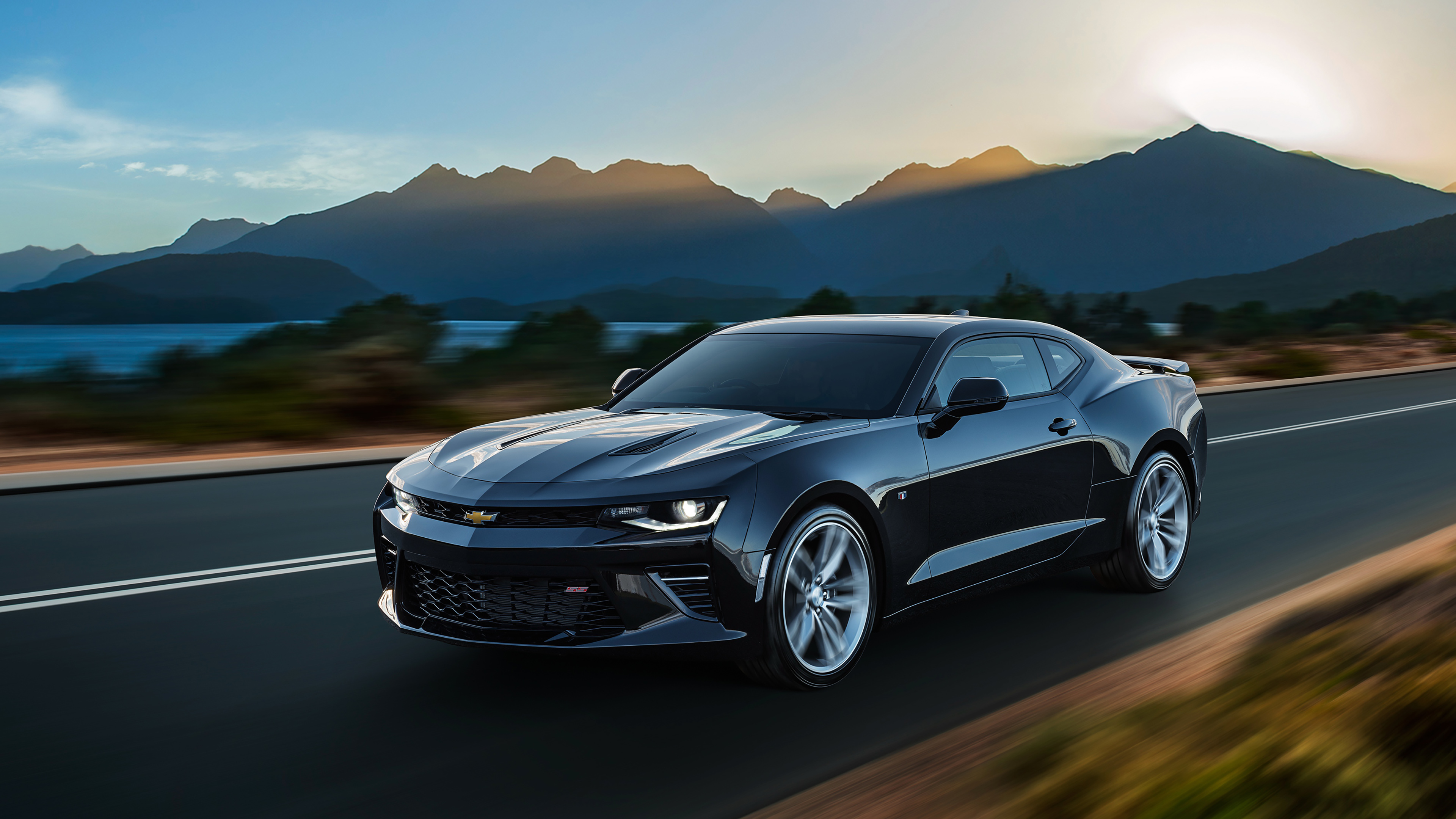
7. **Chevrolet Captiva Sport — The Rental Fleet Ghost**The Chevrolet Captiva Sport is a crossover that many average shoppers have likely never heard of—and for very good reason. It was never sold to the public through traditional dealership channels. Instead, GM strategically brought the Captiva Sport to the U.S. exclusively as a fleet-only vehicle, mostly intended for rental car companies between 2012 and 2015. Built on an outdated Saturn Vue platform, the Captiva was essentially a temporary stopgap product, introduced during GM’s post-bankruptcy reorganization. Today, it haunts the used market as an oddball, showing up with predictably high miles, an often questionable maintenance history, and virtually no consumer demand.
Because it was fleet-only, the majority of units in the used market come saddled with high mileage and a history of hard use. Rental cars, by their very nature, tend to endure far more aggressive wear and tear than privately owned vehicles, and they typically receive only the bare minimum in terms of maintenance. Dealers who reluctantly accept a Captiva Sport on trade understand they’re inheriting a vehicle that has likely been flogged for years by a revolving door of drivers who didn’t care about long-term condition. This history immediately raises bright red flags for any reputable lot that prioritizes vehicle quality and customer satisfaction.
Another significant strike against the Captiva Sport is its complete lack of brand support or public familiarity. It simply doesn’t possess the name recognition or public trust of a popular CR-V or even a ubiquitous Ford Escape, which inevitably makes it an incredibly tough sell, even if a particular unit happens to be in surprisingly decent shape. Most shoppers are not actively searching for a Captiva Sport; in fact, a significant number don’t even know what it is or that it ever existed. This leads to stagnation on dealership lots, where these vehicles often sit unsold for extended periods unless they are heavily, aggressively discounted. Even at low prices, savvy buyers can easily discover far better, more reliable options at similar price points.
Mechanically, the Captiva Sport wasn’t a complete disaster, but it wasn’t exactly robust either. It came equipped with a 2.4-liter inline-four engine paired to a six-speed automatic transmission, and while this powertrain was common in various other GM products of the era, it conspicuously failed to shine in the Captiva. Many units have unfortunately been known to suffer from issues such as excessive oil consumption, noticeable transmission shudder, and a host of electrical faults that can prove expensive to diagnose and repair. Compounding these issues is the fact that because GM never truly backed the model with marketing or a dedicated dealer network for retail sales, parts availability and service knowledge can be surprisingly scarce for what is, in essence, a relatively recent vehicle.
For conscientious dealers, the bottom line regarding the Captiva Sport is simple: it is a dead-end vehicle. It fails to bring in any meaningful customer traffic, suffers from abysmal resale performance, and carries a tremendous amount of mechanical uncertainty and potential liability. Most respectable dealers will immediately send these cars to wholesale auction the moment they arrive, often taking an immediate loss just to clear them from valuable inventory space. It serves as a stark reminder that not all GM products are created equal—and that some fleet leftovers are best left in the past.
Car Model Information: 2024 Toyota Camry SE
Name: Opel Antara
Manufacturer: General Motors
ModelCode: ubl
Aka: ubl
Production: 2006–2015 (Europe)
Assembly: Bupyeong-gu, Incheon
Class: Compact crossover SUV
BodyStyle: SUV
Engine: ubl
Transmission: Manual transmission,4-speed automatic,5-speed automatic,Automatic transmission,continuously variable transmission
Layout: Front-engine, front-wheel-drive
Platform: GM Theta platform
Wheelbase: 2707 mm
Abbr: on
Length: 4575 mm
Width: 1850 mm
Height: 1704 mm
Weight: convert
Predecessor: Isuzu Wizard,Holden Frontera
Successor: ubl
Related: Chevrolet Captiva#C100
Categories: 2010s cars, All-wheel-drive vehicles, Articles with short description, CS1 Spanish-language sources (es), Cars discontinued in 2015
Summary: The Opel Antara is a compact crossover SUV which was marketed by Opel from 2006 to 2015. Based on the Theta platform, the Antara closely shared its underpinnings and powertrains with the Chevrolet Captiva. Unlike the Captiva, it is only offered with five seats instead of seven, and features a different exterior and interior design. Sales commenced in November 2006, as the indirect successor to the Isuzu-based Frontera range.
In the United Kingdom, the car was sold as the Vauxhall Antara; in Australasia, the car was badged as the Holden Captiva 5/Captiva MaXX; and in the United States and Canada, it had been sold as the Saturn Vue. The Antara was marketed as the GMC Terrain in the Middle East, Daewoo Winstorm MaXX in South Korea, and as the Chevrolet Captiva Sport in the Americas except Chile, where it was sold as an Opel.
Get more information about: Opel Antara
Buying a high-performing used car >>>
Brand: Chevrolet Model: Captiva Sport
Price: $23,188 Mileage: 64,336 mi.
Read more about: The Silent Drain: 11 Luxury Sedans Whose Resale Value Vanished Overnight

8. **Jeep Compass (Pre-2017) — A Compact Crossover That Missed the Mark**The Jeep Compass, particularly the first-generation model produced between 2007 and 2016, is a textbook example of a vehicle that failed to deliver on its brand promise. While it proudly wore the revered Jeep badge—a name intrinsically associated with rugged adventure, unparalleled off-road credibility, and American grit—the early Compass was widely perceived as a compromised, underwhelming entry into the compact crossover segment. It was, unfortunately, built far more for cost-cutting than for genuine capability or driving enjoyment, and the regrettable results were plain for all to see. Even years later, these pre-2017 models remain stubbornly difficult to sell, and most dealers would rather avoid them altogether.
One of the Compass’s most glaring and persistent shortcomings was its uninspiring powertrain. The vast majority of early models came notoriously equipped with either a 2.0- or 2.4-liter inline-four engine, invariably mated to a continuously variable transmission (CVT). The unfortunate result was sluggish acceleration, drone-heavy performance that felt disconnected and unrefined, coupled with surprisingly poor real-world fuel economy when compared to its contemporary competitors. Buyers who harbored any expectations of experiencing any sort of “Jeep DNA” in the driving experience were routinely and profoundly disappointed. The first-generation Compass was never genuinely sporty, never truly off-road capable (except in the exceedingly rare and often overlooked Trailhawk trims), and certainly not particularly smooth or quiet on pavement either, making for an unpleasant daily drive.
Interior quality also left much to be desired, instantly broadcasting its budget origins. Hard plastics, cheap upholstery, and decidedly outdated infotainment systems were regrettably the norm well into the 2010s. While Jeep did attempt to refresh the Compass several times during its lengthy first generation, the improvements were, by and large, superficial and mostly cosmetic, failing to address the underlying issues of poor material choice and ergonomic design. Both buyers and professional reviewers consistently noted that the interior felt years behind the aggressive competition, which severely limited its appeal even within the typically more forgiving budget-friendly segment. For used car buyers now accustomed to the increasingly well-equipped and thoughtfully designed Hyundais or Kias, the early Compass simply didn’t hold up in terms of perceived or actual quality.
Reliability proved to be yet another debilitating Achilles’ heel for the first-generation Compass. Owners commonly reported a frustrating litany of issues, including problems with the notoriously finicky CVT transmission, premature failure of suspension components, and a host of baffling electrical system glitches. While it would be unfair to suggest that *all* Compass models were problematic, the unfortunate inconsistency in build quality and the sheer volume of recurring complaints left a distinctly sour taste in the mouths of many first-time Jeep buyers, irrevocably damaging brand loyalty. That negative reputation, unfortunately, still clings to these models today. Most used car buyers have either read extensively about or personally experienced someone else’s Compass woes, which makes it an incredibly hard sell on any dealership lot, no matter the price. Even aggressive pricing often isn’t enough to sway a cautious and well-informed shopper.
From a pragmatic dealership perspective, the first-generation Compass is an undeniably risky acquisition. While the dramatically improved and redesigned models from 2017 onward have largely redeemed the Compass name, the preceding generation remains unequivocally toxic inventory. They invariably require more extensive and costly reconditioning than their modest resale value can ever justify, and genuine customer interest in them is usually minimal at best. Unless a dealer is specifically targeting a very specific budget segment, the early Compass rarely justifies the precious space it occupies on a lot. Consequently, most are quietly and quickly shuffled off to wholesale auctions or offloaded to low-end liquidators, a clear sign of a vehicle best left in the annals of automotive history.
Car Model Information: 2020 Jeep Cherokee Latitude Plus
Name: Jeep Compass
Caption: 2019 Jeep Compass
Manufacturer: Jeep
Production: 2006–present
ModelYears: 2007–present
Class: Compact crossover SUV
BodyStyle: SUV
Layout: Front-engine, front-wheel-drive layout
Chassis: Unibody
Categories: 2010s cars, 2020s cars, All-wheel-drive vehicles, All Wikipedia articles written in American English, Articles with short description
Summary: The Jeep Compass is a compact crossover SUV, introduced in 2006 for the 2007 model year. The first generation Compass and Patriot, its rebadged variant, were among Jeep’s first crossover SUVs. The second-generation Compass debuted in September 2016 in Brazil and at the Los Angeles International Auto Show in November 2016, sharing a modified platform with the Renegade. It is positioned between the smaller Renegade and the larger Cherokee globally or the Commander in South America. The third-generation Compass debuted in May 2025, built on the STLA Medium by Stellantis, shared with other PSA Groupe vehicles.
Get more information about: Jeep Compass
Buying a high-performing used car >>>
Brand: Jeep Model: Compass
Price: $15,877 Mileage: 96,780 mi.
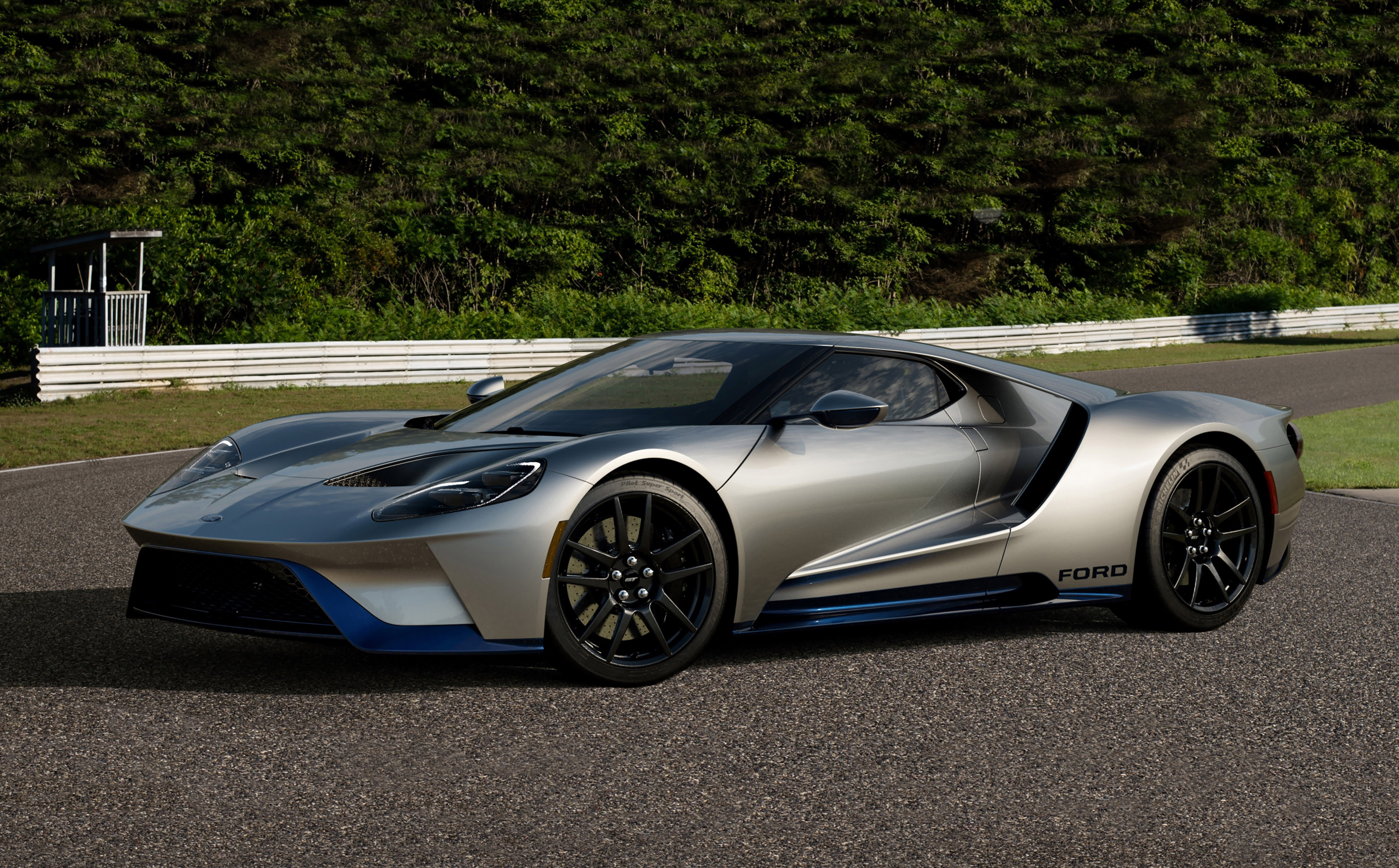
9. **Ford EcoSport — A Subcompact Misstep**The Ford EcoSport eventually arrived in the U.S. market in 2018, well after it had been on sale internationally. Originally conceived and designed for emerging markets, the EcoSport was Ford’s attempt to swiftly capitalize on the burgeoning subcompact SUV trend across America. Regrettably, it never quite managed to hit the desired mark. Both buyers and professional reviewers were quick to criticize its inexplicably cramped interior, its undeniably outdated engineering, and its often-awkward, uninspired styling. It simply looked and felt behind the curve from day one.
Fast forward just a few short years, and the EcoSport has firmly established itself as a vehicle that dealers are exceedingly eager to avoid, whether it’s offered as a trade-in or as an outright resale. Its eventual discontinuation in 2022 only served to officially confirm what many astute observers in the automotive industry already knew: the EcoSport was, without question, a swing and a miss in the highly competitive U.S. crossover space. Its legacy is one of missed opportunities and buyer frustration.
One of the most persistent and frustrating issues with the EcoSport is its underwhelming performance. The base engine—a diminutive 1.0-liter turbocharged three-cylinder—was, to put it mildly, laughably underpowered for the demands of American roads, especially when attempting to merge onto highways or execute a pass at higher speeds. Even the optional 2.0-liter four-cylinder, paired with all-wheel drive, offered precious little improvement in terms of responsiveness or overall refinement. Crucially, its fuel economy wasn’t particularly competitive either, which was a significant disappointment given the vehicle’s small size and relatively light weight. Drivers who were expecting a zippy, efficient commuter were often left feeling utterly frustrated by the EcoSport’s persistent lethargy and its frequently unrefined transmission behavior, leading to buyer’s remorse.
Interior quality, unfortunately, did absolutely nothing to help the EcoSport’s already struggling case. While Ford did make an effort to include modern infotainment features such as Apple CarPlay and Android Auto, the rest of the cabin felt distinctly cheap, hard, and undeniably cramped. The rear seat was uncomfortably tight even for average-sized adults, making long journeys a chore for passengers, and the cargo space was oddly shaped and considerably less usable than its exterior dimensions might suggest on paper. The notorious side-hinged rear door, instead of a traditional upward-lifting liftgate, was a peculiar feature that quickly became a frustrating annoyance in everyday use, particularly in tight parking spaces or when trying to load groceries. It was a clear design choice that felt profoundly out of place in a segment where practicality and functionality are paramount.
From a reliability standpoint, the EcoSport hasn’t been a catastrophic failure, but it certainly hasn’t impressed either, falling short of the dependability expected from a Ford. Owners have reported a wide range of bothersome issues, including nagging electrical glitches, rough idling concerns, and various strange drivetrain noises, particularly as examples accumulated higher mileage. Because it regrettably shared many parts with other global Ford vehicles that were never specifically sold in the U.S. market, repairs can sometimes be surprisingly more complicated or significantly costlier than used buyers initially anticipate. Combine that with a dwindling number of factory-backed warranty options post-2022 (when production ceased), and you’re left with a vehicle that makes both used buyers and cautious dealers hesitate significantly before committing.
For most dealerships, the EcoSport is simply viewed as a car that will only move off the lot with the inducement of deep, profit-cutting discounts—and even then, it’s typically considered a last resort for buyers desperate for something cheap with a crossover badge. Inventory turnover for these units is notoriously slow, and profit margins are exceedingly thin due to the aggressive pricing needed to compete with far more desirable and better-engineered options like the Honda HR-V or Mazda CX-30. For many seasoned dealers, accepting an EcoSport on trade is more an act of charity or customer service than a strategic business decision. In a highly saturated market, with precious little interest from savvy buyers, the EcoSport represents inventory best avoided.
Read more about: Beyond the Blink: How a Ford Camera Glitch Uncovers Systemic Engineering Failures and the Lingering Shadows of Automotive Design Mistakes
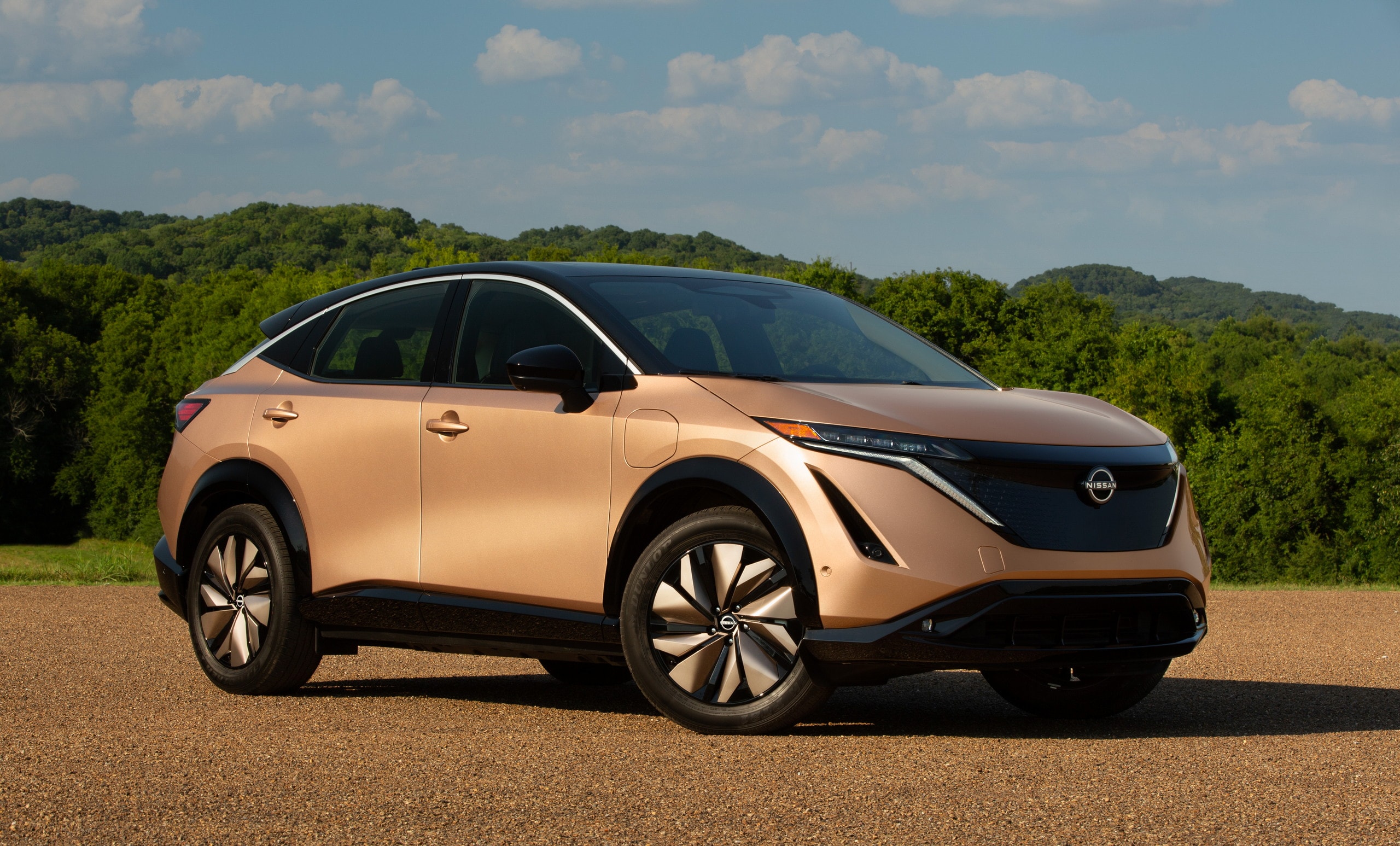
10. **Nissan Rogue (CVT Era) — A Reputation Problem on Wheels**The Nissan Rogue, in its various iterations, has often been a top seller for the brand, offering practical family transportation. However, a specific chapter in its history—often referred to as the ‘CVT Era’ (roughly covering models from 2007 through 2017)—has left an indelible and problematic stain on its used market reputation. While newer Rogue models have made significant strides, these earlier generations are plagued by issues largely centered around Nissan’s use of continuously variable transmissions (CVTs) that have given dealers and used buyers ample reason for concern and avoidance. The promise of efficiency often came at the cost of reliability, creating a lasting legacy of apprehension.
The heart of the problem for these specific Rogue models lies in those continuously variable transmissions. Nissan was an early adopter of CVTs across much of its lineup, and while the technology aims to provide smooth, stepless acceleration and improved fuel economy, the execution in many older Rogue models was deeply flawed. Owners frequently reported a range of issues: audible whining noises, unsettling shuddering during acceleration, and, most critically, widespread premature failure. These failures often presented with little warning, leading to costly repair bills that could easily exceed the value of the used vehicle. For a used buyer, this represents a significant and often unacceptable financial risk, turning a perceived bargain into a potential money pit.
These CVT issues also had a direct and negative impact on the driving dynamics, which, for a publication like Car and Driver, is always a critical evaluation point. Instead of the refined, responsive feel found in competitors equipped with traditional automatics or even improved modern CVTs, the CVT-era Rogue models often suffered from an unpleasant engine droning during acceleration, a noticeable lack of responsiveness, and an overall unrefined driving experience. This disconnected feeling behind the wheel directly contradicted the expectation of a competent, comfortable family crossover, leaving many drivers feeling disengaged and frustrated. The driving experience, rather than being a selling point, became a liability for these vehicles in the used market.
Unsurprisingly, the pervasive reliability concerns surrounding the CVT have tanked the Rogue’s long-term perception and, consequently, its resale value. A used Nissan Rogue from the CVT era is often viewed as a high-risk purchase, a gamble that many savvy buyers are unwilling to take, even at attractive price points. Dealers know this all too well; they struggle to move these units off the lot without significant price reductions, which, in turn, further contributes to their steep depreciation. The consistent stream of online complaints and negative owner forums only reinforces this negative perception, making it an uphill battle to convince a potential buyer that an older Rogue is a sound investment.
From a dealer’s perspective, these specific Nissan Rogue models are best avoided for several compelling reasons. The potential for expensive transmission repairs translates directly into costly reconditioning efforts or customer complaints and warranty claims post-sale. The difficulty in selling them quickly means they occupy valuable lot space and reduce inventory turnover. While newer Nissan models, including the redesigned Rogue, have largely addressed these transmission issues, the stigma of the CVT era remains potent in the used market. For a dealer focused on profitability and customer satisfaction, taking on a CVT-era Rogue is often seen as an unnecessary risk that rarely pays off.
**Making Informed Choices in a Crowded Market**
Navigating the labyrinthine landscape of the used crossover market requires more than just a passing glance at online listings. As we’ve seen, the difference between a highly desirable, fast-selling vehicle and one that sits gathering dust on a dealer’s back lot is often profound, rooted in years of real-world performance, engineering choices, and, crucially, owner satisfaction. While models like the Toyota RAV4 and Honda CR-V have built their stellar reputations on unwavering reliability and universal appeal, others, such as the Dodge Journey and the CVT-era Nissan Rogue, serve as cautionary tales, reminding us that a low price tag can sometimes mask significant long-term headaches. Whether you’re a buyer seeking lasting value, a seller hoping to maximize your return, or a dealer strategizing your inventory, understanding these critical distinctions is paramount. This guide, forged from both hard-earned dealer experience and undeniable consumer reality, aims to empower you to make truly informed decisions, ensuring your next used crossover is a source of joy, not remorse.

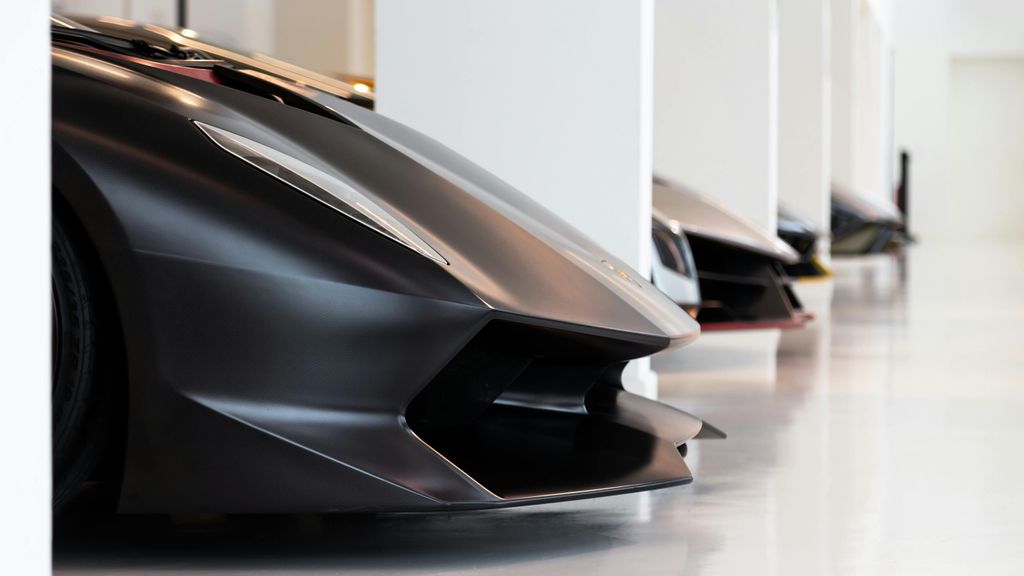
.jpg)
